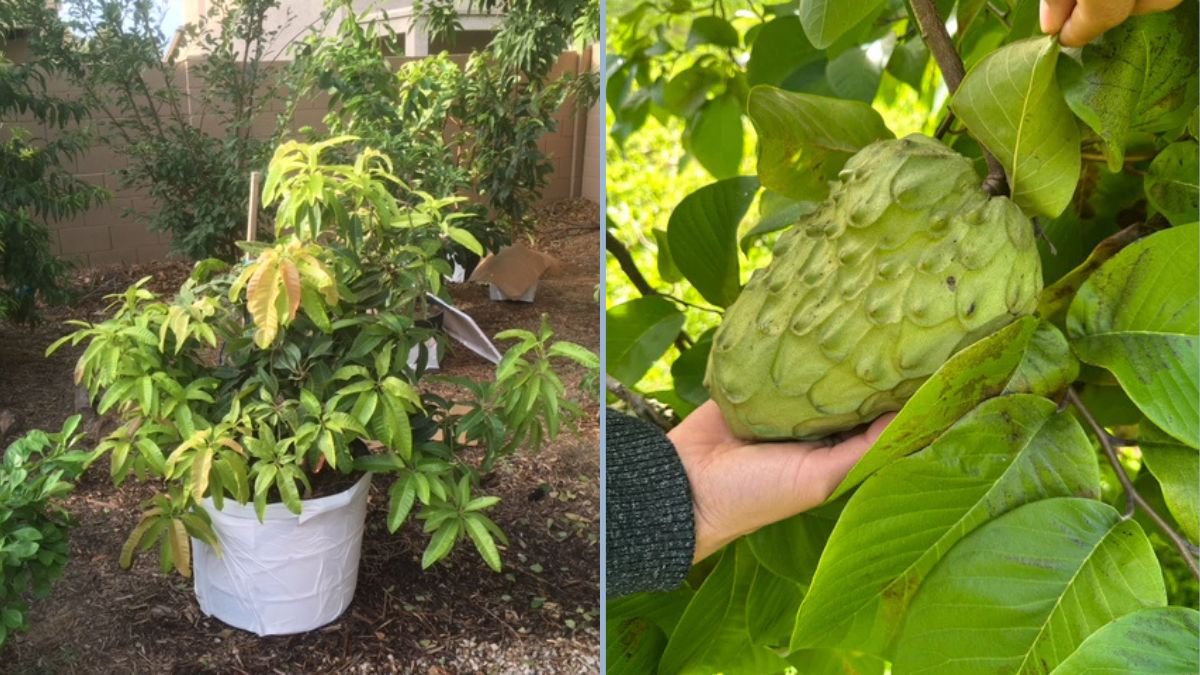Cherimoya (Annona cherimola), also known as the “custard apple” or “ice cream fruit,” is a tropical and subtropical fruit tree prized for its creamy, aromatic, and sweet fruit. While cherimoya grows best in mild subtropical climates, extreme summer heat can pose serious challenges to its growth and fruit production. However, with the right techniques and care, it is possible to cultivate healthy cherimoya trees even in hot, arid conditions.
This comprehensive guide explores strategies to grow cherimoya trees in extreme summer heat, from selecting heat-tolerant varieties to advanced watering, shading, and soil management practices.
Understanding the Challenges of Extreme Heat
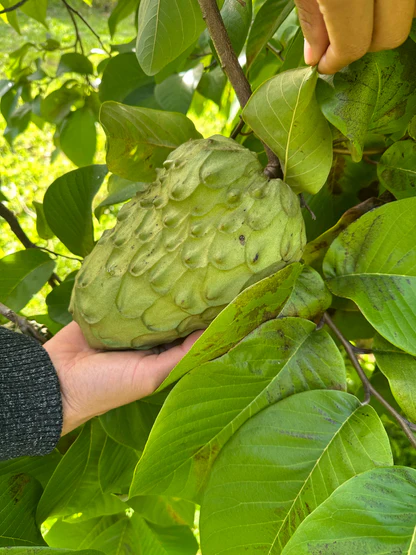
Extreme summer temperatures, typically above 35°C (95°F), can stress cherimoya trees and impact their growth and fruiting:
- Leaf scorching: Direct, intense sunlight can burn leaves, causing brown tips or edges.
- Water stress: High temperatures increase evaporation, leading to dehydration and nutrient deficiencies.
- Flower drop: Heat stress can cause flowers to fall prematurely, reducing fruit set.
- Root damage: Excessive heat can dry out the soil, damaging root systems.
- Reduced fruit quality: Prolonged heat can cause smaller fruits or poor flavor development.
Understanding these challenges allows gardeners to take proactive measures to protect trees and optimize growth.
Step 1: Choosing Heat-Tolerant Varieties
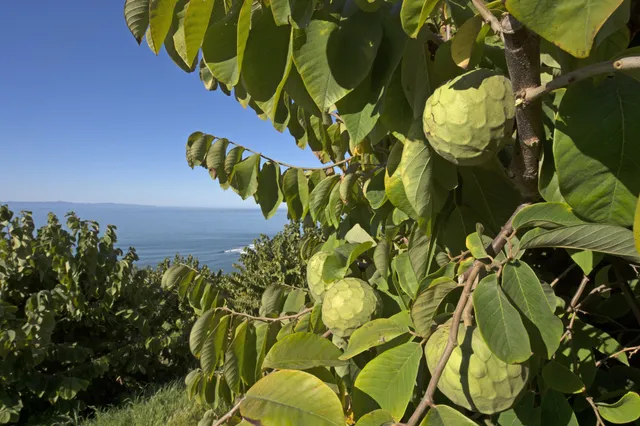
The first step in growing cherimoya in extreme heat is selecting the right varieties:
- Varieties adapted to warm climates: Some cherimoya cultivars tolerate higher temperatures better than others. Examples include ‘Fino de Jete,’ ‘White,’ and ‘Deliciosa.’
- Disease resistance: Choose varieties resistant to heat-related stress diseases, such as sunburn or fungal infections.
- Rootstock selection: If grafting, use rootstocks known for tolerance to drought and heat.
Selecting heat-tolerant varieties ensures your trees are better equipped to withstand summer extremes.
Step 2: Proper Planting Location
The location of your cherimoya tree is critical for managing heat stress:
- Partial shade: Plant trees where they receive morning sun but are protected from the harsh afternoon sun.
- Air circulation: Ensure good airflow to reduce heat buildup around leaves and prevent fungal growth.
- Proximity to water sources: Access to irrigation allows consistent watering during extreme heat.
- Soil type: Well-draining, moisture-retentive soils reduce root stress during hot periods.
Strategic placement minimizes heat exposure and enhances tree survival and productivity.
Step 3: Soil Preparation and Mulching
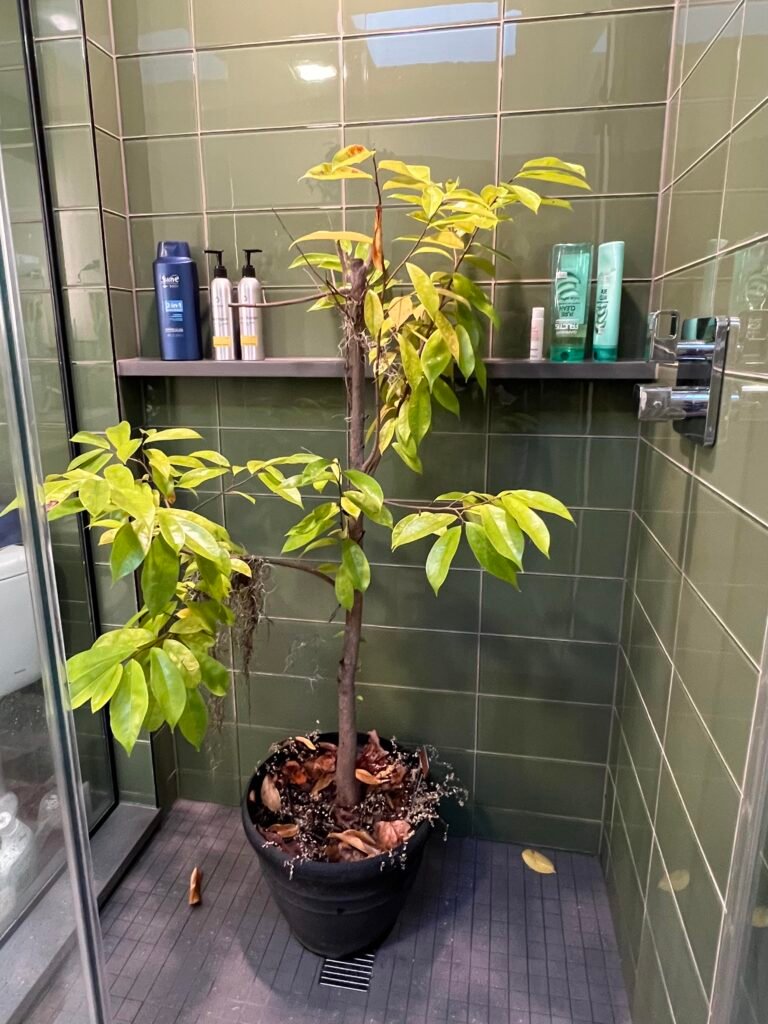
Healthy soil and proper mulching are essential for retaining moisture and protecting roots:
- Soil enrichment: Incorporate organic matter such as compost or well-rotted manure to improve water-holding capacity.
- pH level: Cherimoya prefers slightly acidic to neutral soil (pH 6.0–7.0).
- Mulching: Apply 5–10 cm of organic mulch, such as straw, leaves, or wood chips, around the base of the tree.
- Benefits of mulching:
- Reduces evaporation and maintains soil moisture.
- Keeps roots cool in extreme heat.
- Suppresses weeds that compete for water and nutrients.
Proper soil and mulch management buffer trees against temperature extremes.
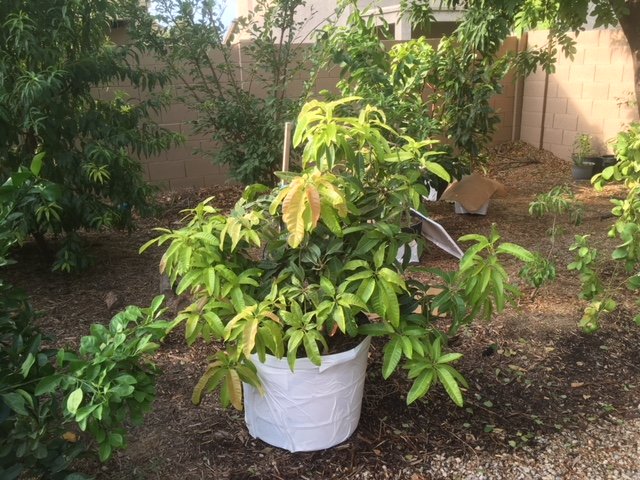
Step 4: Advanced Watering Techniques
Water management is crucial for cherimoya survival during extreme heat:
- Deep watering: Provide slow, deep irrigation rather than frequent shallow watering to encourage deep root growth.
- Morning watering: Water early in the day to allow the tree to absorb moisture before peak heat.
- Drip irrigation: Efficiently delivers water directly to roots while minimizing evaporation.
- Avoid overwatering: Excess water in hot weather can lead to root rot or fungal infections.
Maintaining consistent soil moisture helps prevent heat stress and supports photosynthesis during hot days.
Step 5: Shading and Protective Measures
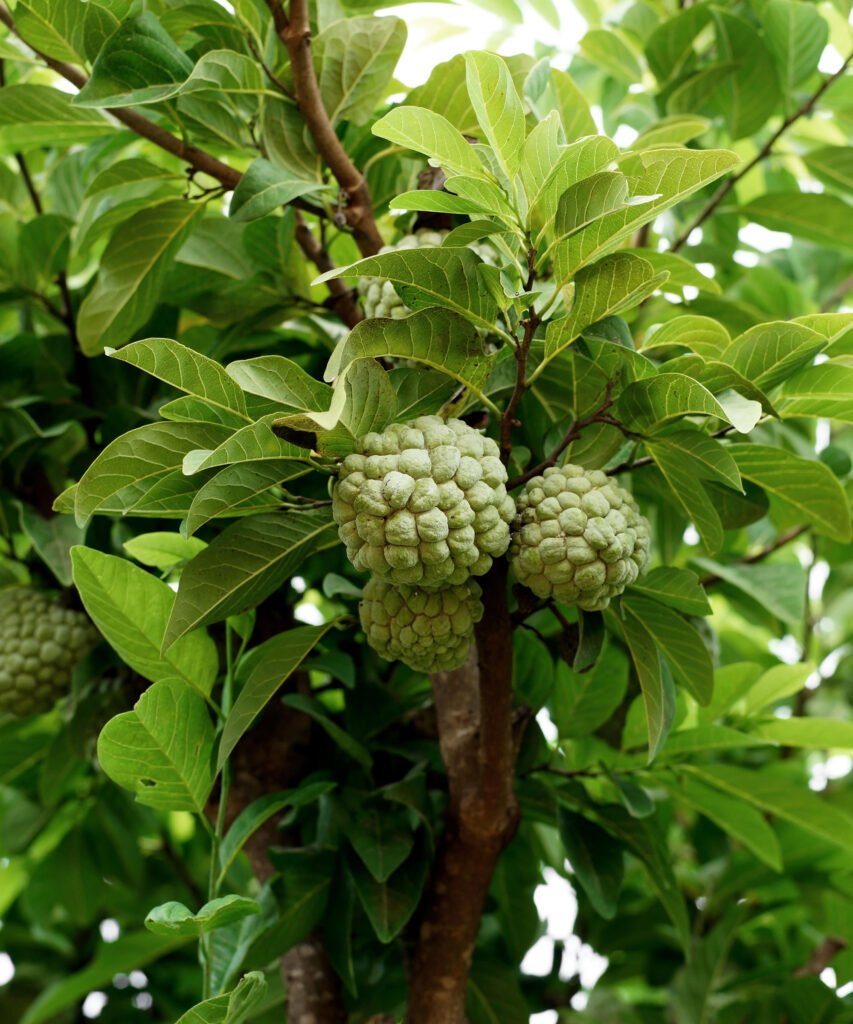
Reducing direct sunlight exposure is vital for heat protection:
- Temporary shade cloth: Use 30–50% shade cloth during peak summer months to protect leaves and fruits.
- Tree shelters: Install screens or shade nets around young trees to reduce heat stress.
- Intercropping: Plant companion crops or taller plants nearby to provide natural shade.
- Whitewashing trunks: Apply a mixture of water and lime to trunks to reflect sunlight and reduce sunburn risk.
Shading and protective techniques help minimize leaf scorching and improve fruit set.
Step 6: Fertilization Under Heat Stress
Proper fertilization ensures trees remain healthy and productive during high temperatures:
- Balanced nutrients: Apply a balanced fertilizer (NPK 10:10:10) or slow-release fertilizer to maintain vigor.
- Micronutrients: Zinc, magnesium, and calcium support leaf health and fruit development.
- Timing: Avoid heavy fertilization during peak heat; feed early in the morning or late in the evening.
- Organic alternatives: Compost, vermicompost, or seaweed extracts provide nutrients without overloading the tree.
Nutrient management is key to helping trees cope with heat-related stress.
Step 7: Pruning for Heat Management
Pruning helps manage canopy density and improves air circulation:
- Remove damaged or diseased branches: Reduces heat-related stress and disease susceptibility.
- Thin canopy: Allows sunlight penetration to lower leaves while preventing overcrowding.
- Maintain manageable size: Smaller, well-shaped trees experience less heat stress and are easier to irrigate and harvest.
Regular pruning improves overall tree health and enhances fruit quality.
Step 8: Monitoring for Pests and Diseases
Heat-stressed cherimoya trees are more susceptible to pests and diseases:
- Common pests: Aphids, mealybugs, and scale insects thrive in hot conditions.
- Fungal infections: Powdery mildew and root rot can increase under heat and irrigation imbalance.
- Preventive measures:
- Inspect trees regularly.
- Use organic sprays like neem oil or insecticidal soap.
- Maintain proper airflow and avoid excessive humidity around foliage.
Early intervention prevents pests and diseases from weakening trees during extreme heat.
Step 9: Harvesting in Hot Climates
Extreme heat can accelerate fruit maturation, so careful monitoring is necessary:
- Fruit readiness: Harvest when fruits soften slightly and emit a sweet aroma.
- Frequent checks: High temperatures can cause fruits to ripen faster than expected.
- Post-harvest care: Store fruits in cool, shaded areas to prevent spoilage.
Timely harvesting ensures optimal flavor and prevents heat-induced damage.
Step 10: Long-Term Strategies for Summer Resilience
For ongoing heat management, consider these long-term strategies:
- Tree age and maturity: Mature trees handle heat better than young seedlings. Protect young trees with temporary shade.
- Irrigation systems: Install drip irrigation or soaker hoses for efficient water delivery.
- Soil improvement: Continue adding compost and organic matter annually to retain moisture.
- Mulch maintenance: Refresh mulch layers regularly to maintain root protection.
- Windbreaks: Plant shrubs or install fences to reduce hot wind exposure.
Proactive strategies increase survival and productivity even under extreme summer heat.
Tips for Thriving Cherimoya Trees in Extreme Heat
- Choose heat-tolerant varieties and strong rootstocks.
- Plant in partial shade with good airflow.
- Use well-draining, nutrient-rich soil with mulching.
- Implement deep, consistent watering, preferably in the morning.
- Provide shade using nets, shelters, or companion plants.
- Fertilize carefully, emphasizing micronutrients and organic matter.
- Prune regularly to thin the canopy and remove damaged branches.
- Monitor for pests and diseases and act early.
- Harvest fruits timely to prevent heat damage.
- Continuously improve soil and irrigation practices for long-term resilience.
Conclusion
Growing cherimoya trees in extreme summer heat is challenging but achievable with careful planning, proper care, and proactive management. By selecting heat-tolerant varieties, providing shade, maintaining consistent irrigation, and monitoring tree health, gardeners can enjoy healthy, fruit-bearing cherimoya trees even in hot climates.
Adopting these strategies not only protects trees from heat stress but also ensures high-quality fruit production, improved tree longevity, and a rewarding gardening experience. With patience and attention, cherimoya trees can thrive and provide sweet, creamy fruits even under the most challenging summer conditions.
Whether for home gardens or small-scale orchards, mastering these heat-management techniques empowers growers to cultivate the “ice cream fruit” successfully in extreme summer climates.
